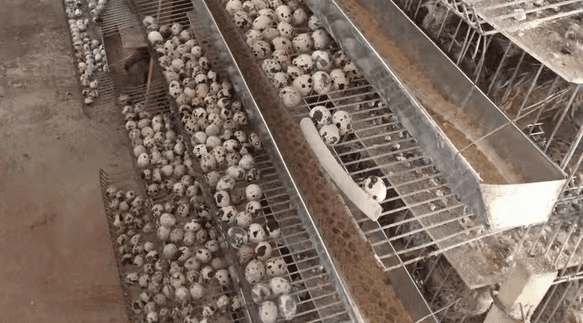The cold climate in winter will cause many unfavorable factors for raising quails. Therefore, problems should be discovered and dealt with in a timely manner by strengthening inspections of quail houses. In quail farms, breeding and management personnel should regularly inspect the quail houses at least twice a day in order to understand the dynamic information of the quail flocks. When raising quails in winter, you should focus on checking the following seven aspects:

1. Check the harmful gases to quails. The most harmful gases are ammonia and hydrogen sulfide, which can stimulate quail's sensory organs, induce respiratory diseases, and reduce feed utilization. If you can smell the smell of ammonia when entering the quail house, it means that the ammonia in the quail house has already exceeded the standard. Hydrogen sulfide has a high specific gravity, and the concentration is higher closer to the ground.
2. Check the temperature
Check whether the temperature on the thermometer matches the actual required temperature. If the temperature difference is too large, take immediate measures to control the temperature within the required range. And try to stay relatively stable.
3. Check ventilation. Especially in severe winter when the temperature is too low, people often only pay attention to keeping warm and ignore ventilation. When the ventilation is good, the quails will be lively and active, and there will be no peculiar smell in the house. Especially when the temperature and ventilation are suitable, they will have a comfortable feeling. If it is found that the quail is wilting and breathing slightly without any illness, and the quail house is filled with dust and has a strong odor, it means that the air in the quail house is extremely dirty, and ventilation should be strengthened immediately.
4. Check the stool. Check the color of the stool to see if there is blood. Generally speaking, the droppings of laying quail are soft and formed. Some diseases can cause quails to develop diarrhea. When quails suffer from Newcastle disease, they will discharge green, yellowish-white, watery feces. Bloody stools in the house indicate that most of the quail are infected with coccidia. When abnormal feces are found, the quail defecating should be found for diagnosis and treatment, and a necropsy should be performed if necessary.

5. Check the humidity. Higher humidity is conducive to the survival and reproduction of microorganisms. If accompanied by Low temperatures will aggravate the hazards of low temperature. If the humidity is low, the quail house will be dry, which can easily induce respiratory diseases in quails. Especially if young quails are kept in a dry environment for a long time, it can lead to dehydration and weakness. Therefore, attention should be paid to adjusting the humidity of the quail house.
6. Check the lighting
The natural lighting time in winter is short and cannot meet the physiological needs of quails for laying eggs, so artificial lighting is needed to supplement it.
7. Check the quail’s drinking water and eating eggs. The quail’s food consumption is relatively stable. If the quail’s food consumption drops significantly or they only drink water but do not eat food, it indicates that the quail has been infected with certain diseases and should be treated as soon as possible. Find out the cause and treat it promptly.

 扫一扫微信交流
扫一扫微信交流
发布评论